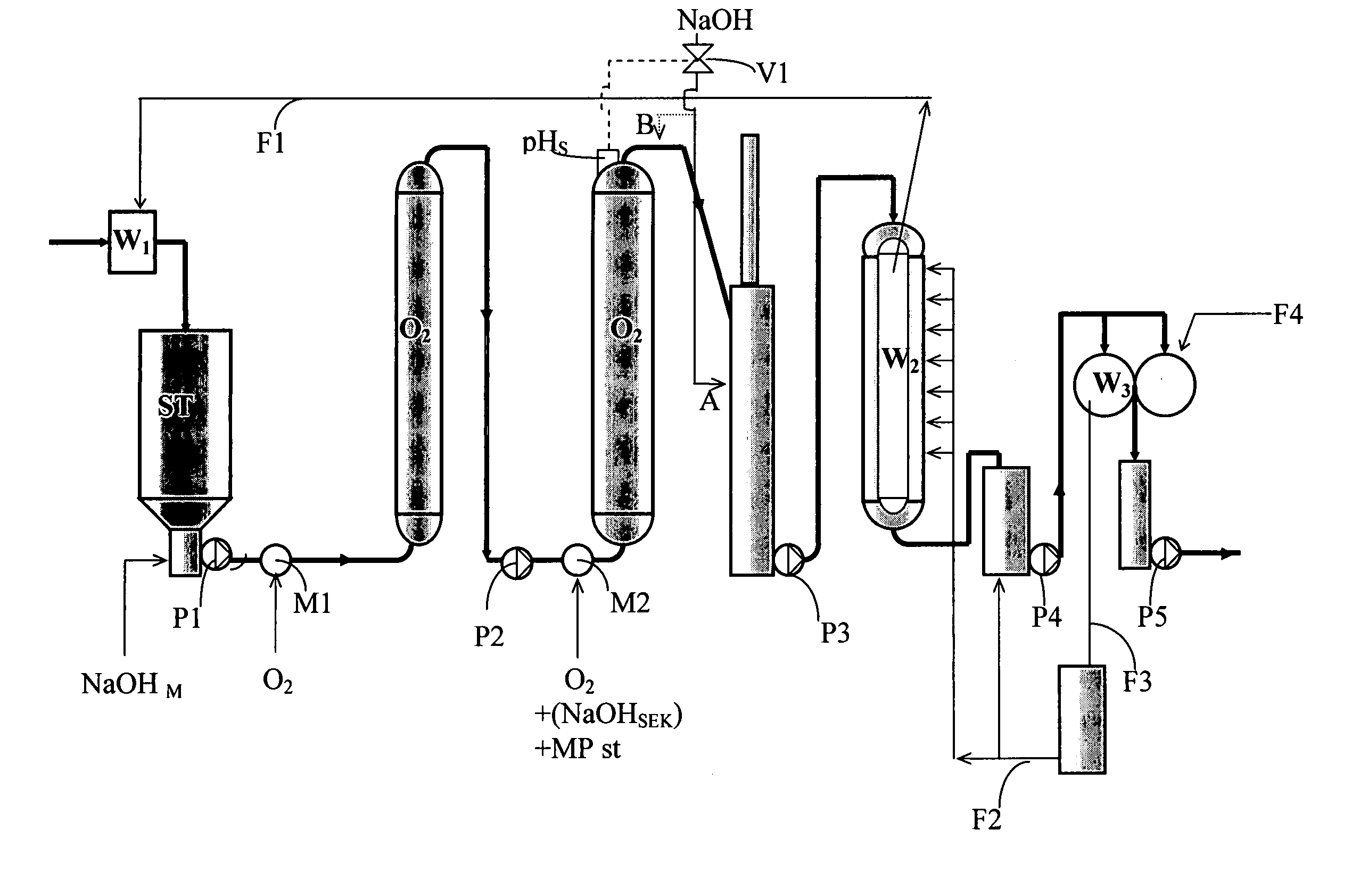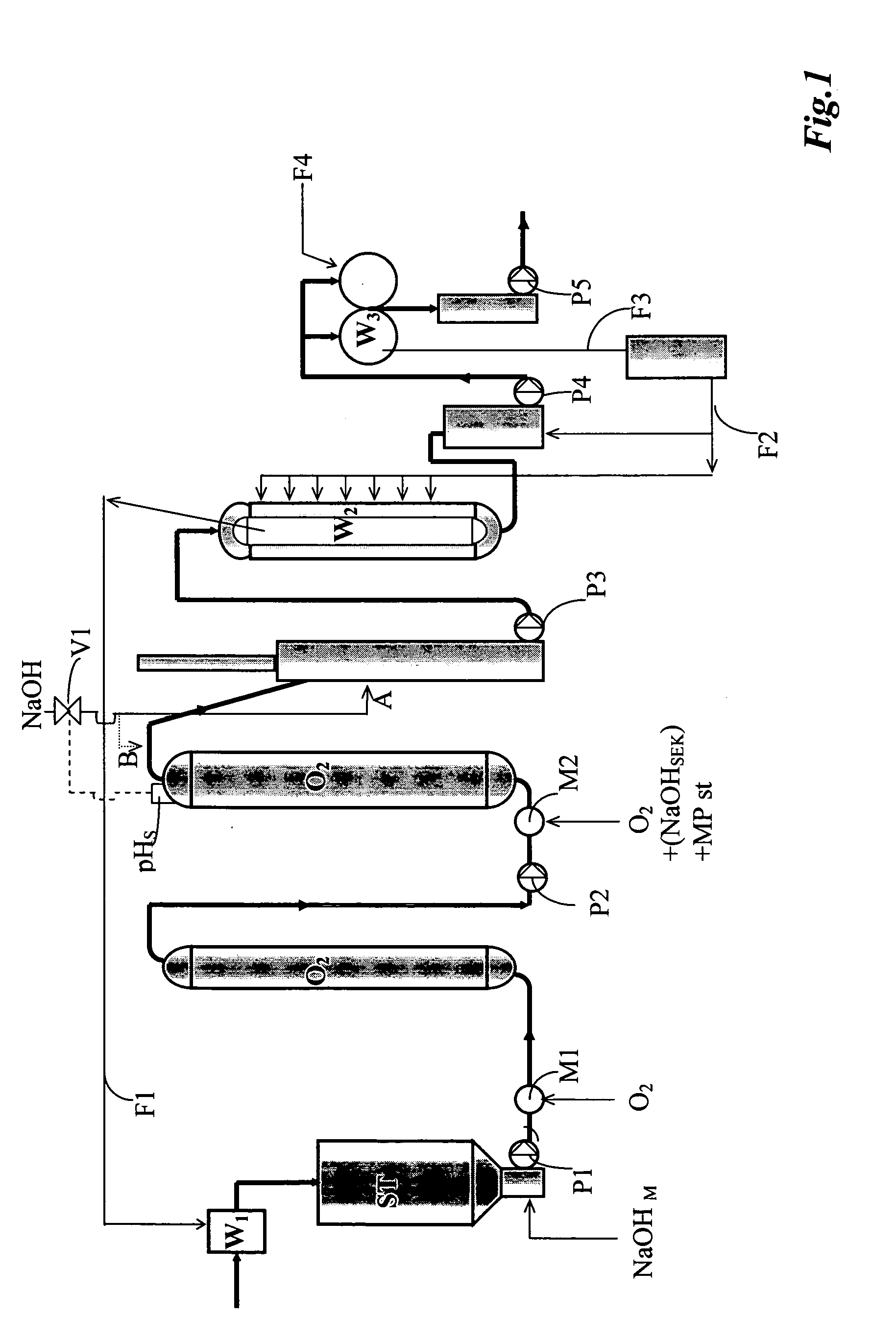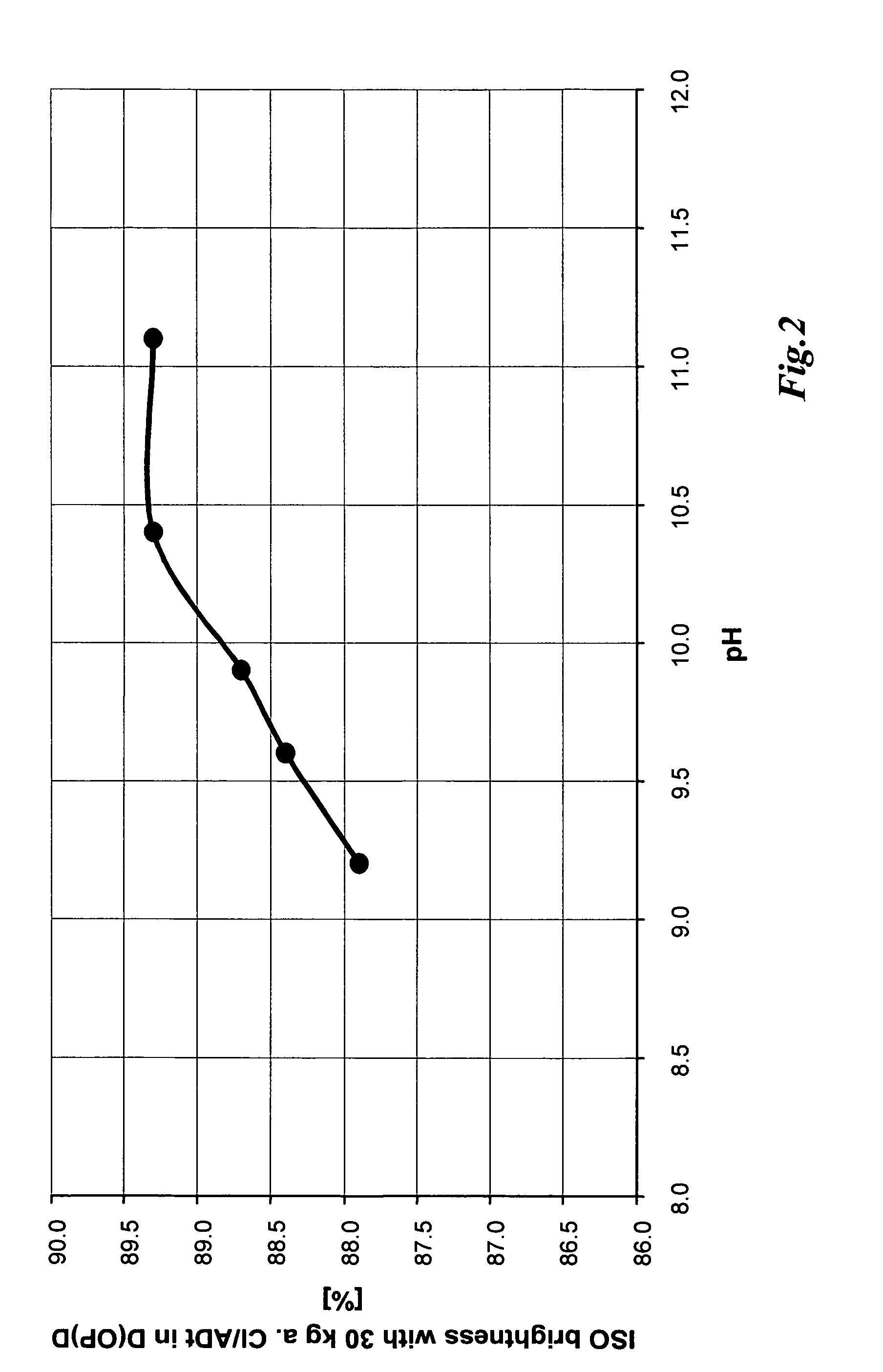Method and arrangement for oxygen delignification of cellulose pulp
a technology of oxygen delignification and cellulose pulp, which is applied in the direction of pulping with inorganic bases, digesters, textiles and papermaking, etc., can solve the problems of increasing the risk of fiber damage, affecting the quality of cellulose pulp, and the entire volume of cellulose pulp in the reactor system has time, so as to achieve the optimal end-ph and adjust quickly to the optimal end-ph, the effect of even pulp quality
- Summary
- Abstract
- Description
- Claims
- Application Information
AI Technical Summary
Benefits of technology
Problems solved by technology
Method used
Image
Examples
Embodiment Construction
[0016]In FIG. 1 a system is shown for oxygen delignification of cellulose pulp at medium consistency 8–18% where the reactor system has two oxygen reactors O2 in series including mixing in a mixer M2 disposed between the reactors. In many of the applications it may be sufficient to use a first pulp P1 to successfully feed the pulp through the reactor system, although the pressure reduction solely due to the flow losses (exclusive the static height) after the first reactor can be up to about 3–4 bars. Normally, the first reactor is pressurized with a peak pressure level of at least 5–10 bars, typically 6–7 bars peak pressure, to be able to maintain the added oxygen in the solution wherein the amount of oxygen is the greatest in the beginning.
[0017]In systems with only one pump P1, the second reactor is exposed to a pressure reduction that is slightly less. If one wants to strengthen the subsequent alkaline final phase with a higher pressure in the second reactor or one only wants to ...
PUM
| Property | Measurement | Unit |
|---|---|---|
| pH | aaaaa | aaaaa |
| kappa numbers | aaaaa | aaaaa |
| pressure | aaaaa | aaaaa |
Abstract
Description
Claims
Application Information
 Login to View More
Login to View More - R&D
- Intellectual Property
- Life Sciences
- Materials
- Tech Scout
- Unparalleled Data Quality
- Higher Quality Content
- 60% Fewer Hallucinations
Browse by: Latest US Patents, China's latest patents, Technical Efficacy Thesaurus, Application Domain, Technology Topic, Popular Technical Reports.
© 2025 PatSnap. All rights reserved.Legal|Privacy policy|Modern Slavery Act Transparency Statement|Sitemap|About US| Contact US: help@patsnap.com



